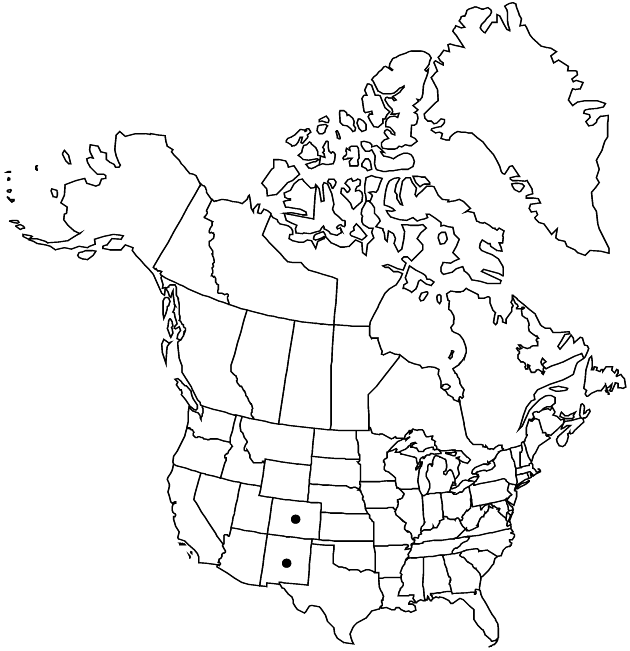Difference between revisions of "Herrickia horrida"
Contr. U.S. Natl. Herb. 16: 186, plate 50. 1913.
FNA>Volume Importer |
FNA>Volume Importer |
||
| Line 55: | Line 55: | ||
|publication year=1913 | |publication year=1913 | ||
|special status= | |special status= | ||
| − | |source xml=https://jpend@bitbucket.org/aafc-mbb/fna-data-curation.git/src/ | + | |source xml=https://jpend@bitbucket.org/aafc-mbb/fna-data-curation.git/src/f50eec43f223ca0e34566be0b046453a0960e173/coarse_grained_fna_xml/V19-20-21/V20_846.xml |
|tribe=Asteraceae tribe Astereae | |tribe=Asteraceae tribe Astereae | ||
|genus=Herrickia | |genus=Herrickia | ||
Revision as of 21:31, 16 December 2019
Subshrubs or perennials, 30–60 cm cespitose; rhizomes woody, elongate, branched. Stems 1–20+, erect, branched, straight to ± flexuous, long- and short-stipitate-glandular, more densely so distally. Leaves cauline, proximal reduced and deciduous by flowering, coriaceous, rigid; sessile; blades oblong to oblong-ovate or ovate to nearly orbiculate, 10–45 × 4–30 mm, gradually reduced distally, bases cordate-clasping, main veins marked, margins sharply spinulose-serrate, scabridulous, short-stipitate-glandular, apices acute to obtuse, mucronate, faces scabrellous, ± short-stipitate-glandular. Heads 1–30+ in open corymbiform arrays or borne singly at ends of long, leafy branches. Peduncles 0.3–4 cm, densely stipitate-glandular; bracts 0–3, often proximal to heads and appearing to be part of involucres, foliaceous, margins entire or ± serrate. Involucres campanulate, 8.5–12 mm. Phyllaries (ca. 40) in 5–6 series, spreading, sometimes purplish tinged (inner or bases of outer), keeled, linear-lanceolate to oblanceolate, lance-oblong, or lanceolate, coriaceous, margins narrowly scarious, hyaline, sometimes purplish distally (inner), erose, short-stipitate-glandular along foliaceous distal parts, apices acute and spinulose to long-cuminate (innermost), often purplish-margined, faces short-stipitate-glandular; outer apically broadly foliaceous 1/3–9/10 (foliaceous part often wider than base), inner usually narrowly foliaceous 1/3 or less, sometimes green parts lanceolate apically along midnerves or none. Ray florets 17–20; laminae purple, 15–22 × 1.2–2 mm. Disc florets ca. 29; corollas yellow turning purplish, barely ampliate, ca. 8.2 mm, tubes shorter than funnelform throats (ca. 2.5 mm), lobes erect to spreading, triangular, 0.6–0.8 mm. Cypselae brown, fusiform, ± compressed [mature size not available], ribs 7–10, glabrous; pappi of (ca. 40) tawny bristles 7–7.5 mm. 2n = 18.
Phenology: Flowering Jul–Sep.
Habitat: Rocky hillsides, steep, narrow, brushy, canyon bottoms, with Quercus, Juniperus, Fallugia, and Forestiera
Elevation: 1600–2900 m
Discussion
Of conservation concern.
Herrickia horrida is known only from the Animas River basin, in Colfax County, northern New Mexico, and Las Animas County, southern Colorado.
Selected References
None.

